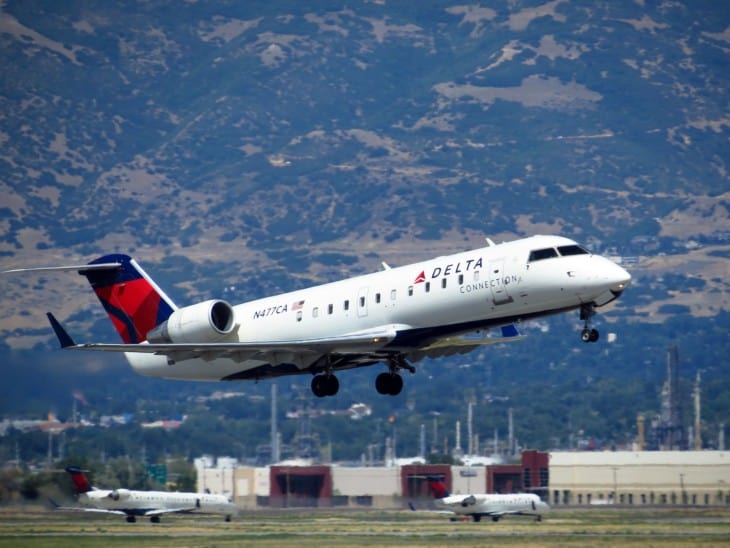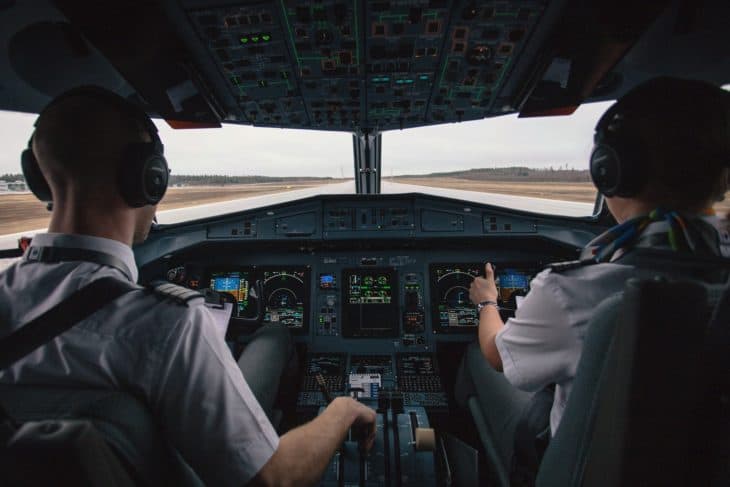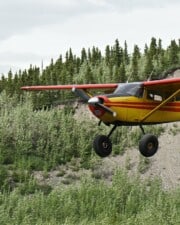One of the most important things students learn on their road to becoming pilots is that they must master their own bodies before learning to master an aircraft. Flying is easy, but making good decisions and being self-aware enough to realize that you could make a big mistake takes practice.
Part of this stems from the personality traits that most pilots share. Pilots are mission-driven–they have a goal and perform the tasks necessary to that end. It’s hard to admit your faults, no matter how natural and normal they may be.
This is just one reason that fatigue in aviation is such a problem. Flying is hard work that requires constant attention, and some pilot jobs require long hours or long commutes. Quality rest can be hard to find even when you aren’t flying. Fatigue is a real problem that every pilot will face at one time or another, and recognizing its risk is critical to flight safety.
What is Pilot Fatigue?
Everyone has experienced fatigue at one point or another. Most of us recognize it after a late night cramming for exams or a long road trip. Fatigue in aviation has been a topic of discussion ever since Charles Lindbergh flew solo nonstop across the Atlantic in 1927. His time from New York to Paris? 33 1/2 hours.
But it’s important to draw a line between acute fatigue, which is tiredness, and chronic fatigue, which stems from a long-term lifestyle. For example, if you stay up late cramming for exams, you take the exam and then get a good night’s rest. The next day, you have recovered–except for your grades, which may not recover. Cramming is not an effective study technique.
Chronic fatigue is much longer term. It results from a consistent lack of quality sleep due to medical or lifestyle factors. For a professional pilot, this might mean getting a new schedule with more “red-eye” flights. Or it could also stem from working extended days, or commuting long distances before and after your work day.
When you feel tired after a long drive, you can’t keep your eyes open. The simple act of getting out of the car to grab a cup of coffee or go for a walk can get your blood pumping and fix you up for another hour or two. Once you get to the hotel and get a few hours of sleep, you’ll be good as new.
But chronic fatigue has no simple fix and no easy-to-identify symptoms. The long-term build-up of fatigue means that your body adjusts to its new normal. You might not feel your eyelids getting heavy or the overwhelming need for sleep anymore. You seem to be functioning normally. But, like someone who has had a few too many alcoholic drinks, your reaction times are slowed, your senses are dulled, and your critical thinking skills are impaired.
The FAA defines fatigue in aviation up this way:
“Fatigue is a condition characterized by increased discomfort with lessened capacity for work, reduced efficiency of accomplishment, loss of power or capacity to respond to stimulation, and is usually accompanied by a feeling of weariness and tiredness.”
It’s worth noting that pilots are not the only professionals who struggle with fatigue-related issues. Fatigue in aviation maintenance and ground handling personnel is also a problem.
Outside of aviation, medical professionals like surgeons and nurses face similar difficulties. Heavy-equipment operators and professionals in the transportation sector, like bus drivers and train conductors, must also be aware of the dangers. Any safety-related field can be affected by operator fatigue.
What Causes Fatigue, and What Are the Signs of Fatigue?
The causes of fatigue depend on the type. The Pilot’s Handbook of Aeronautical Knowledge divides fatigue into several types: acute, skill fatigue, and chronic fatigue.
Acute Fatigue
Acute fatigue is a regular part of everyday life. Strenuous workouts, excitement, or a poor night’s sleep can cause it.
A secondary type of acute fatigue is skill fatigue. It results from completing this same task repeatedly, as pilots do in the cockpit. Skill fatigue is specifically of interest to pilots because it causes a timing disruption–the timing of tasks becomes slightly inaccurate over time. It also causes a pilot to focus only on those tasks, disregarding stimuli on the periphery.
Causes of acute fatigue include a few of special interest to pilots. It should be noted, however, that acute fatigue has many causes, most of which are experienced outside of flying.
- Hypoxia (lack of sufficient oxygen)
- Physical stress
- Reduced energy from psychological stress
- Psychological stress
Chronic Fatigue
Chronic fatigue is experienced over a longer period and is more likely to have psychological roots. Certain medical conditions can contribute, however. For example, it is a symptom of sleep apnea, a breathing disorder.
Chronic fatigue is experienced differently by individuals. Here is a list of a few of the signs.
- Physical weakness
- Tiredness
- Heart palpitations
- Breathlessness
- Headaches
- Irritability
- Stomach or intestinal problems
- Aches and pains
- Emotional illness

The Dangers of Fatigue
For pilots, some of the specific dangers of experiencing fatigue in the cockpit might include degradation and reduction of the following skills.
- Skill accuracy
- Decision-making skills
- Memory sharpness
- Judgment proficiency
- Reaction time
- Situational awareness
If you think that sounds like a bad combination at the controls of an aircraft, you are correct. Unfortunately, fatigue contributes to a high percentage of aircraft accidents. Most sources cite that human factors cause approximately 80 percent of accidents. And fatigue accounts for something like 20 percent of those.
On the one hand, the aircraft operating environment is fatigue-inducing–long days combined with physical and psychological stressors. The environment is noisy and cramped, and the tasks are boring and repetitive. As romantic as flying a plane is, the minutiae of line pilot life consist of less glamor.
On the other hand, the lifestyle of a commercial pilot is also often problematic. Operators have traditionally followed the letter of the law (mostly) but disregarded the spirit of the law.
Yes, the crew only flies for eight hours in any 24 hours. But they pay little attention to the crew’s living situation during the other 16 hours.
Are they commuting to work by deadheading on other flights to their departure point? Are they catching a nap when able in an FBO pilot lounge? Has their schedule changed recently, requiring a shift in their circadian sleep cycles?
Thankfully, new regulations have addressed these issues more specifically in recent years.
Fatigue in Aviation Accidents
Over the decades, countless aircraft accidents have been partly due to crew fatigue. Two accidents, in particular, shed light on the working conditions of pilots and the dangerous role fatigue can play in accidents.
Comair (Delta Connection) Flight 5191

The Bombardier CRJ1000ER crashed during takeoff from Kentucky enroute to Atlanta. Taxiing during the predawn hours, the crew lined up and attempted to depart Runway 26 instead of their assigned Runway 22. Unfortunately, runway 26 was too short for the aircraft, which ran off the runway before becoming airborne. All 47 passengers and two of the three crew members were killed.
There were many contributing factors to this accident, but one was fatigue. A look at the airport’s layout makes it easy to see that lining up on the wrong runway would be a simple mistake.
However, the runway the flight used was unlit. The pilots can be heard commenting on how strange it was that the lights were off on the cockpit voice recording. They should have confirmed the runway heading before their takeoff roll. The early morning predawn hour no doubt contributed. The NTSB identified pilot fatigue as a major factor.
They also faulted the air traffic control tower. They were supposed to have two controllers on duty for overnight operations but had only one. The single controller had not noticed the plane departing the wrong runway and therefore did not issue an abort warning. The requirement for having two controllers on duty was, of course, a fatigue risk mitigation rule.
Colgan Air (Continental) Flight 3407
Flight 3407 departed Newark, New Jersey, on February 12, 2009, for Buffalo, New York. The Bombardier Q400 aircraft crashed five miles out of Buffalo after stalling and hitting a house. Everyone on the plane–four crewmembers and 45 passengers–and one person on the ground were killed.
The investigation discovered that while the aircraft lost speed and stalled, the crew improperly responded to cockpit warnings and attempted to pull up instead of lowering the angle of attack and building speed.
Tiredness was cited as one major factor. The flight captain had spent the entire night before at the Newark airport, while the first officer commuted to Newark from Seattle immediately prior.
The flight brought home the risks of pilot fatigue to the general public and the working conditions for pilots at regional airlines. Colgan went out of business two years later.
The accident was a major catalyst for reforming the FAA’s crew rest and duty time regulations and qualification requirements for working for Part 121 air carriers.
Fatigue Solutions and Management
Acute fatigue is easily dealt with by carefully monitoring your diet, getting enough rest, and maintaining a healthy sleep schedule. Diet ensures that your body has a sufficient source of energy (calories) from which to work, and rest ensures that the body can adequately store and use that energy.
The FAA recommends you get at least eight hours of sleep daily and limit any naps you take during the day. If you do take naps, make them less than 30 minutes long. Longer than that, and they can disrupt your sleep patterns during the night.
The FAA also states that no amount of training or experience can overcome the detrimental effects of chronic fatigue. The only cure is to stay on the ground, get proper rest and medical care, and fly another day.
Chronic fatigue is a serious condition that usually requires treatment by a physician.
Crew Rest Regulations – FAA Pilot Fatigue Rules and Fatigue Management in Aviation
First and foremost, all Federal Aviation Regulations require pilots to evaluate their physical and mental health and determine if they are fit to fly. But doing so takes practice, and many are not adept at identifying their own health issues. This is especially true with something as insidious as fatigue.
Regarding specific limits on crewmember rest and duty time, flight instructors are limited to eight hours of flying training in a 24-hour period. No limits are placed on what the pilot does during the other 16 hours. This regulation is found in FAR Part 61.195.
More specific limits aimed to curb crew fatigue issues are placed on operators–airlines and charter companies that employ Commerical and Airline Transport Pilots (ATPs).
These regulations have recently been revamped in light of several high-profile accidents attributed to crew fatigue. They now include limitations on crew’s flight times over the quarter or year, as well as the month and per 24-hour period. More importantly, they require rest periods that cannot include time spent commuting.
FAR Part 121, Subparts Q, R, and S have limits for ATPs working for scheduled airlines, while FAR Part 135 Subpart F lays out the rules for charter pilots.
Related Posts













